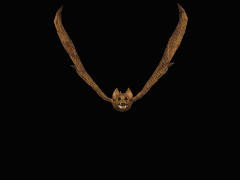


|
Sphenisciformes:
The Order Sphenisciformes is formed by penguins which are flightless birds living exclusively in the Southern Hemisphere.
Evolution:
The evolutionary history of penguins is poorly understood, as penguin fossils are rare. The oldest known fossil penguin species are the Waimanu, which lived in the early Paleocene epoch of New Zealand, about 62 million years ago. While they were not as well adapted to aquatic life as modern penguins (which first emerged in the Eocene epoch 40 million years ago), Waimanu were flightless and loon-like, with short wings adapted for deep diving. These fossils prove that prehistoric penguins were already flightless and seagoing, so their origins probably reach as far back as 65 million years ago, before the extinction of the dinosaurs. Penguin ancestry beyond Waimanu is not well known, though some scientists (Mayr, 2005) think the penguin-like plotopterids (usually considered relatives of anhingas and cormorants) may actually be an early sister group of the penguins, and that penguins may have ultimately shared a common ancestor with the Pelecaniformes. During the Late Eocene and the Early Oligocene (40-30 MYA), some lineages of gigantic penguins existed. Nordenskjoeld's Giant Penguin was the tallest, growing nearly 1.80 meters (6 feet) tall. The heaviest known species was with at least 80 kg the New Zealand Giant Penguin. Both were found on New Zealand, the former also in the Antarctic. Palaeeudyptines:
Traditionally, most extinct species of penguins, giant or small, have been placed in the paraphyletic sub-family called Palaeeudyptinae. More recently, it is becoming accepted that there were at least 2 major extinct lineages, one or two closely related ones from Patagonia and at least one other with pan-Antarctic and subantarctic distribution. |
